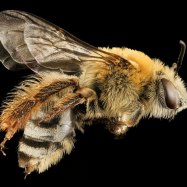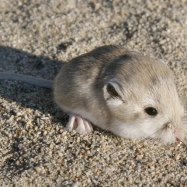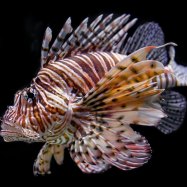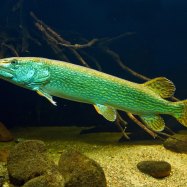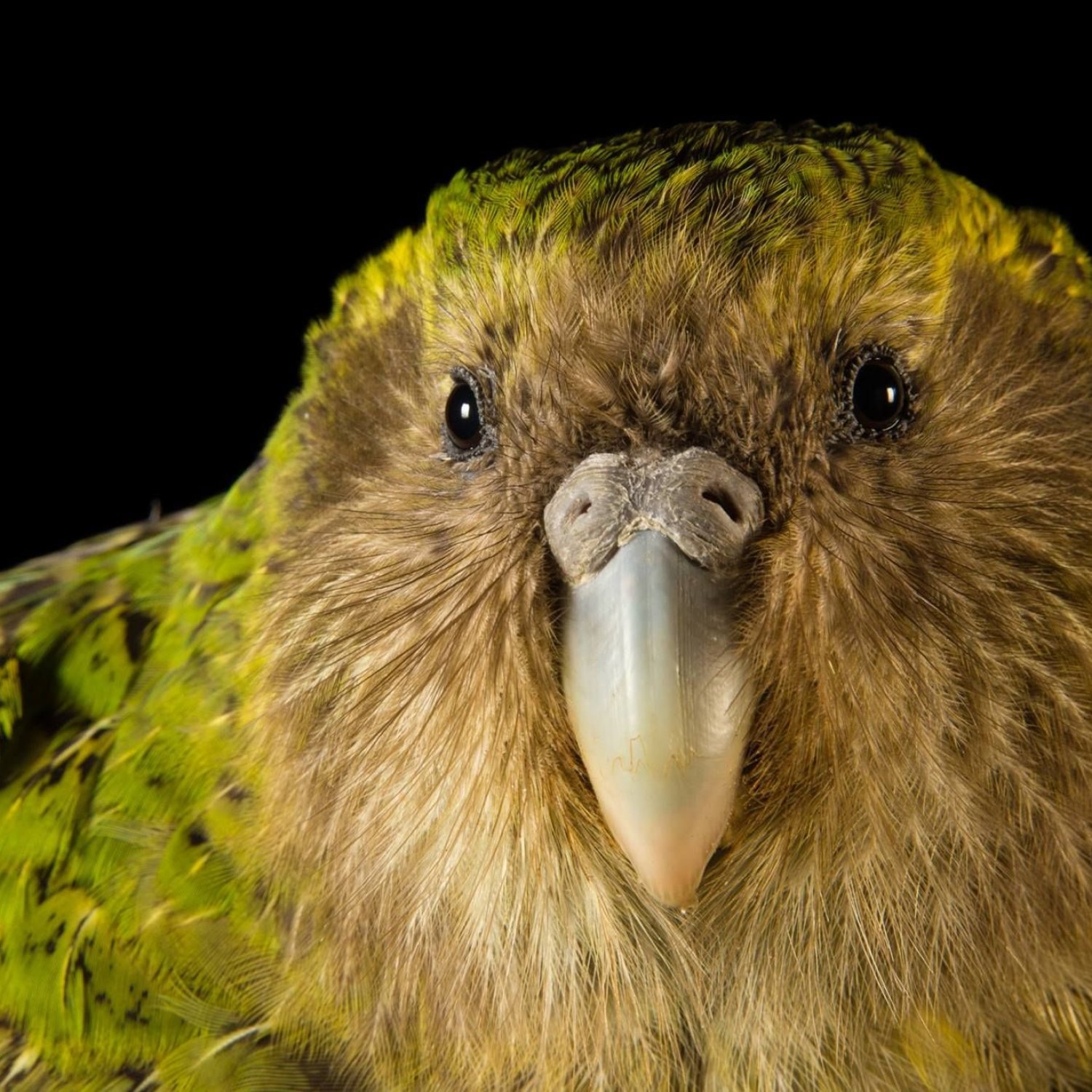
Kakapo
60-64 cm
The Kakapo, also known as the owl parrot, is a large and endearing flightless bird native to the South Island and offshore islands of New Zealand. With a body length of 60-64 cm, this round, plump bird belongs to the Strigopidae family. Its short wings and tail give it a distinctive appearance, making it a popular attraction among nature lovers. #Kakapo #NewZealand #endangeredanimals
Animal Details Summary:
Common Name: Kakapo
Kingdom: Animalia
Habitat: Forest
The Enigmatic Kakapo: New Zealand's Flightless Endangered Parrot
The thick blankets of lush forest covering the South Island and offshore islands of New Zealand are home to one of the rarest and most unique birds in the world - the Kakapo (Strigops habroptilus). With its striking features and fascinating behaviors, this large, flightless parrot has captivated the hearts of many, but its vulnerable status has also made it the subject of conservation efforts.As we delve into the world of this elusive creature, we will discover its scientific classification, habitat, feeding habits, distribution, and physical characteristics that distinguish it from other birds.
The Classification of the Kakapo
The Kakapo belongs to the animal kingdom (Animalia), which includes all the living organisms that are multicellular, heterotrophic, and with cells bound by a plasma membrane Kakapo. Within the animal kingdom, the Kakapo falls under the Chordata phylum, which comprises animals with a notochord and a dorsal nerve cord, including a wide range of species from fishes to mammals.The Kakapo is specifically classified as an avian species (Aves) and belongs to the order Psittaciformes, which encompasses more than 350 species of birds including parrots, cockatoos, and lorikeets. Within this order, the Kakapo is the only species in the family Strigopidae, making it a one-of-a-kind parrot.
The Forest Dwellers
The dense forests of New Zealand's South Island and offshore islands are the natural habitat of the Kakapo. These birds are primarily found in lowland and montane forests, as well as shrublands and tussock grasslands. They are most active during the night, and their nocturnal behaviors help them avoid predators such as cats, stoats, and rats that are introduced predators in New Zealand.The Kakapo has a herbivorous diet, feeding on a variety of plants, including the fruit of native trees, such as the rimu, southern rata, and beech. They also eat leaves, roots, bulbs, and even fern fronds. This broad diet allows them to thrive in different types of vegetation, from dense forests to open grasslands Kooikerhondje.
Restricted Distribution
The Kakapo has a limited distribution, as it is only found in certain parts of New Zealand. The majority of the population is concentrated in Codfish Island, Little Barrier Island, and Anchor Island. These offshore islands are free from invasive predators, making them ideal habitats for the Kakapo population to thrive.In the past, the Kakapo was found throughout New Zealand, but due to introduced predators and habitat destruction, their numbers have dwindled. Today, it is estimated that there are only around 210 Kakapo left in the world, making them one of the rarest birds on the planet.
The Unusual Physical Characteristics of the Kakapo
The Kakapo is a fascinating creature with many distinct physical features that set it apart from other birds. Its name, derived from the Maori language, means "night parrot," which is a fitting name for this mostly nocturnal bird.One of the most striking features of the Kakapo is its vibrant greenish-brown feathers, which provide excellent camouflage in the forest environment. This coloration also helps them blend in with the plants they feed on, making them less visible to predators.
The Kakapo has a large and round body with short wings and a short tail, giving them a stocky and compact appearance. They have strong legs and feet, allowing them to move quickly and climb trees. Unlike most parrots, the Kakapo has a small head and a short, sturdy beak, which is specialized for grinding tough plant material.
With a length of 60-64 cm and weighing between 2 to 4 kg, the Kakapo is the world's heaviest parrot species. They also have a unique ability to inflate their feathers, making themselves look larger when threatened.
One of the most striking features of the Kakapo is its large, round, and bright yellow eyes. These eyes are not only visually appealing, but they also play a crucial role in the bird's nocturnal lifestyle. Their large eyes allow them to see in low light conditions and help them navigate through the forests at night.
A Glimpse into the Life of a Kakapo
The Kakapo is an intriguing bird, not just because of its physical characteristics, but also because of its behaviors and breeding habits. These birds have an impressive lifespan, with some individuals reported to live for over 60 years when cared for in captivity.Kakapo males are known for their elaborate courtship rituals, which include a "boom" call that can be heard up to a kilometer away. This call, along with the male's booming display stance, is used to attract females during the breeding season. Interestingly, Kakapo males do not fight over females, but rather, they display their dominance through their booming calls and physical displays.
During the breeding season, female Kakapos will lay the eggs in a shallow nest made of vegetation, usually on the ground or in the cavity of a tree. The female will then incubate the eggs and care for the chicks on her own, as male Kakapos do not play a role in parenthood.
The Constant Battle for Survival
Despite their long lifespan, Kakapos are currently listed as critically endangered by the IUCN Red List. This is mainly due to habitat loss, the introduction of non-native predators, and diseases.Conservation efforts have been in place to protect the remaining Kakapo population, including predator control on offshore islands and captive breeding programs. While these efforts have helped increase the population, the Kakapo still faces challenges, such as low genetic diversity and difficulty reproducing in captivity.
A Unique and Endearing Species
The Kakapo is indeed an enigma in the world of birds. It is a rare and fascinating creature with a long history in New Zealand and a significant role in the ecosystem. With its unique adaptations and behaviors, it has captured the imagination of people all over the world and remains a symbol of hope for conservation efforts.As we continue to learn more about the Kakapo, it is our responsibility to protect and preserve this extraordinary species for future generations to admire and cherish. The future of the Kakapo may be uncertain, but with proper conservation efforts and support from people worldwide, we can ensure that this remarkable bird continues to roam the forests of New Zealand for many years to come.

Kakapo
Animal Details Kakapo - Scientific Name: Strigops habroptilus
- Category: Animals K
- Scientific Name: Strigops habroptilus
- Common Name: Kakapo
- Kingdom: Animalia
- Phylum: Chordata
- Class: Aves
- Order: Psittaciformes
- Family: Strigopidae
- Habitat: Forest
- Feeding Method: Herbivore
- Geographical Distribution: New Zealand
- Country of Origin: New Zealand
- Location: South Island and offshore islands of New Zealand
- Animal Coloration: Greenish-brown
- Body Shape: Large and round body with short wings and a short tail
- Length: 60-64 cm
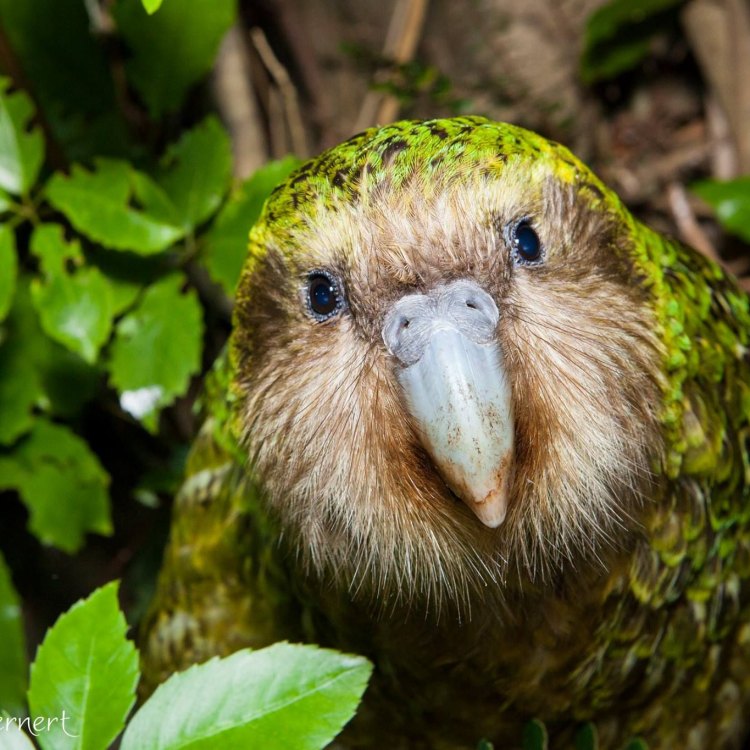
Kakapo
- Adult Size: Weight: 2-4 kg
- Average Lifespan: 60 years
- Reproduction: Sexual
- Reproductive Behavior: Leks (communal breeding display)
- Sound or Call: Loud booming call
- Migration Pattern: Non-migratory
- Social Groups: Solitary
- Behavior: Nocturnal and ground-dwelling
- Threats: Predation by introduced mammalian predators
- Conservation Status: Critically Endangered
- Impact on Ecosystem: Seed dispersal
- Human Use: Conservation and tourism
- Distinctive Features: Large size, flightless, and owl-like face
- Interesting Facts: Kakapo is the heaviest and only flightless parrot species in the world.
- Predator: Introduced mammalian predators such as cats, dogs, and rats
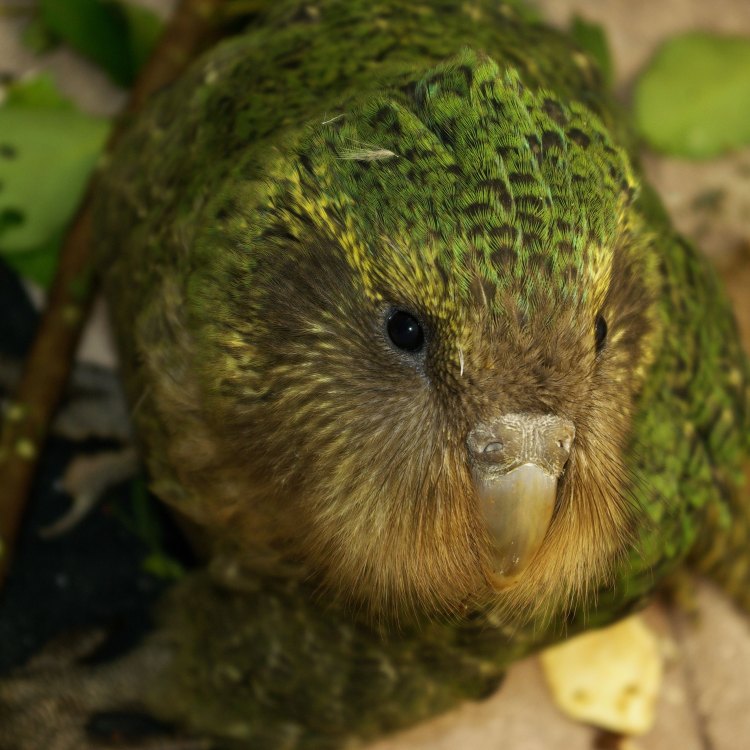
Strigops habroptilus
The Fascinating and Endangered Kakapo: The Flightless Parrot with an Important Role in the Ecosystem and Human Conservation Efforts
It's not every day that you hear about a flightless parrot. Yes, you read that right – a parrot that cannot fly. Meet the Kakapo, a unique and critically endangered bird species that is endemic to New Zealand. This avian wonder has been around for millions of years and has captured the attention of scientists, conservationists, and bird lovers alike PeaceOfAnimals.Com.Kakapo, also known as 'owl parrots', are one of the world's most extraordinary creatures. They have distinctive features, some interesting reproductive behaviors, and play a crucial role in their ecosystem. But sadly, their population has drastically declined over the years, making them a critically endangered species.
In this article, we'll take a deep dive into the fascinating world of Kakapo, learning about their characteristics, behavior, threats they face, conservation efforts, and more.
The Basics: Size, Lifespan and Reproduction
The Kakapo, or Strigops habroptilus, is a species of large, chubby parrot that is roughly the size of a domestic cat. They are flightless birds, and as adults, they can weigh anywhere between 2 to 4 kg. This makes them the heaviest parrot species in the world. They have a round, owl-like face, with large, expressive eyes that give them a wise and curious appearance.These ground-dwelling birds have a nocturnal lifestyle, meaning they are most active during the night Kodkod. Kakapos are solitary creatures and prefer to live alone rather than in flocks. They have a long lifespan and can live up to 60 years in the wild, making them one of the longest-living bird species.
When it comes to reproduction, Kakapos have a unique mating behavior known as leks. This is a communal breeding display where male birds gather in a designated area, known as an arena, and compete for the attention of female birds. During this display, males make loud booming calls and perform elaborate courtship dances to attract a mate. Once a pair has formed, the female will lay a clutch of two to four eggs, and both parents will take turns incubating the eggs until they hatch.
The Sounds of Kakapo: From Booming Calls to Silent Flight
Kakapos are known for their loud booming call, which can be heard up to 5 km away. These calls are mainly used during the leks to attract a mate. However, apart from their booming calls, Kakapos are surprisingly silent. They can use their strong wings to create a low-pitched sound, which is likely used to communicate with other birds or alert them of danger.Interestingly, Kakapos have another unique feature that sets them apart from other parrots – they can silently fly. This is due to their soft and fluffy feathers, which help them fly noiselessly. This adaptation is believed to have evolved as a way to avoid detection by predators.
A Non-Migratory and Solitary Lifestyle
Unlike many bird species, Kakapos are non-migratory, meaning they do not undertake long-distance seasonal movements. They spend their entire lives within a relatively small range, which is usually their home territory. This solitary lifestyle is one of the reasons why it's rare to spot a Kakapo in the wild. Even when there are multiple Kakapos in the same area, they usually live in separate territories and rarely interact with each other.Threats and Conservation Efforts
Despite being a unique and fascinating species, Kakapos are facing severe threats that have led to their critically endangered status. Their main predator is the introduction of mammalian predators, such as cats, dogs, and rats, by humans. These predators hunt and kill Kakapos and their eggs, which have significantly contributed to their population decline.To combat this threat, conservation efforts have been put in place to protect and recover the dwindling Kakapo population. In the 1970s, a decision was made to relocate the remaining Kakapos to predator-free islands, where they can breed safely and increase their numbers. Today, there are about 205 Kakapos in the world, with most living on three protected islands in New Zealand.
The Kaka-Who? The Importance of Kakapo in the Ecosystem
Aside from their unique characteristics, Kakapos also play a crucial role in their ecosystem. These flightless birds have evolved to be excellent seed dispersers, meaning they play a crucial role in plant regeneration and biodiversity. Unlike other birds that possibly eat seeds while perching, Kakapos consume seeds and pulp from the ground, making them vital for the survival of certain plant species.Their nocturnal lifestyle also contributes to the health of their ecosystem. They help control insect populations, and their silent flight ensures that they do not scare away the insects, allowing the ecosystem to maintain a natural balance.
Human Use and Conservation
The importance of Kakapo to humans goes beyond their role in the ecosystem. These birds have also become a symbol of conservation efforts in New Zealand. They have attracted tourists from around the world, who flock to the country to catch a glimpse of these rare and special birds.Thanks to these tourism efforts, the Kakapo population has slowly but steadily increased over the years. The Department of Conservation in New Zealand has also implemented strict rules and regulations to protect these birds, such as banning visitors from the protected islands where Kakapos live.
Interesting Facts about Kakapo
We've already mentioned a few interesting facts about Kakapos, but here are some more fascinating tidbits about these quirky birds:- Kakapos are so heavy that they can only climb a tree once in their lifetime, as their weight would break the branches.
- They have incredibly soft feathers, making them popular among collectors in the 19th century. This, combined with the introduction of predators, has led to their decline in the wild.
- Kakapo is the only flightless parrot species in the world, making them truly one of a kind.
- The word 'Kakapo' comes from the Maori language, meaning 'night parrot.'
The Struggle for the Survival of the Kakapo
Despite conservation efforts and their critical role in the ecosystem, Kakapos are still facing numerous challenges. Inbreeding depression is a significant concern, as there are only a few breeding pairs left in the wild. This has led to genetic problems, such as decreased fertility and weakened immune systems, making it even harder for the species to survive.Additionally, climate change and habitat destruction are also considered potential threats to the remaining Kakapo population. However, with continued conservation efforts and public support, there is hope for the survival and recovery of the Kakapo.
In Conclusion
Kakapos are truly remarkable creatures. From their unique features and reproduction behaviors to their important role in the ecosystem and human conservation efforts, they have captured the hearts of many. But with a critically endangered status and numerous challenges, it's crucial that we continue to raise awareness and support conservation efforts to ensure the survival of this one-of-a-kind flightless parrot species.
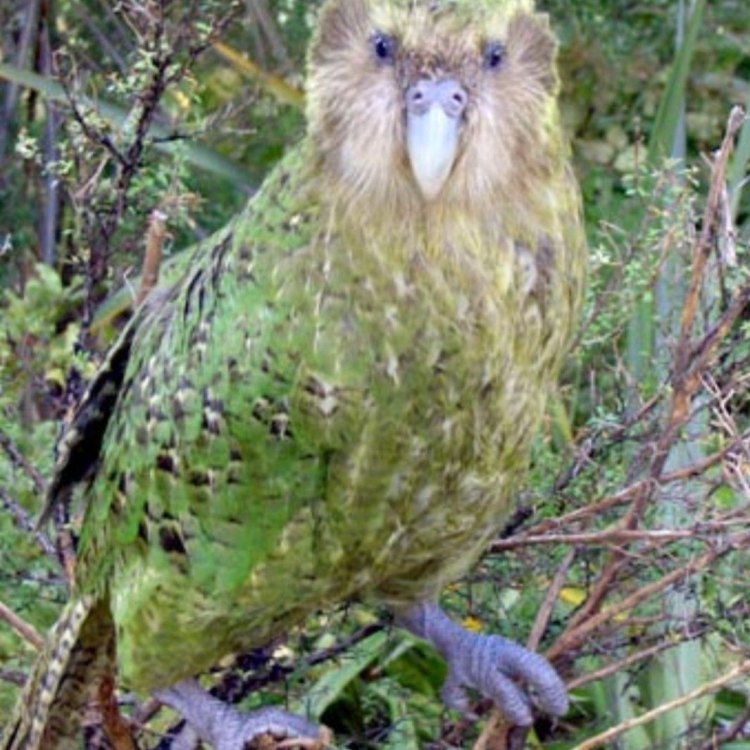
The Enigmatic Kakapo: New Zealand's Flightless Endangered Parrot
Disclaimer: The content provided is for informational purposes only. We cannot guarantee the accuracy of the information on this page 100%. All information provided here may change without prior notice.


